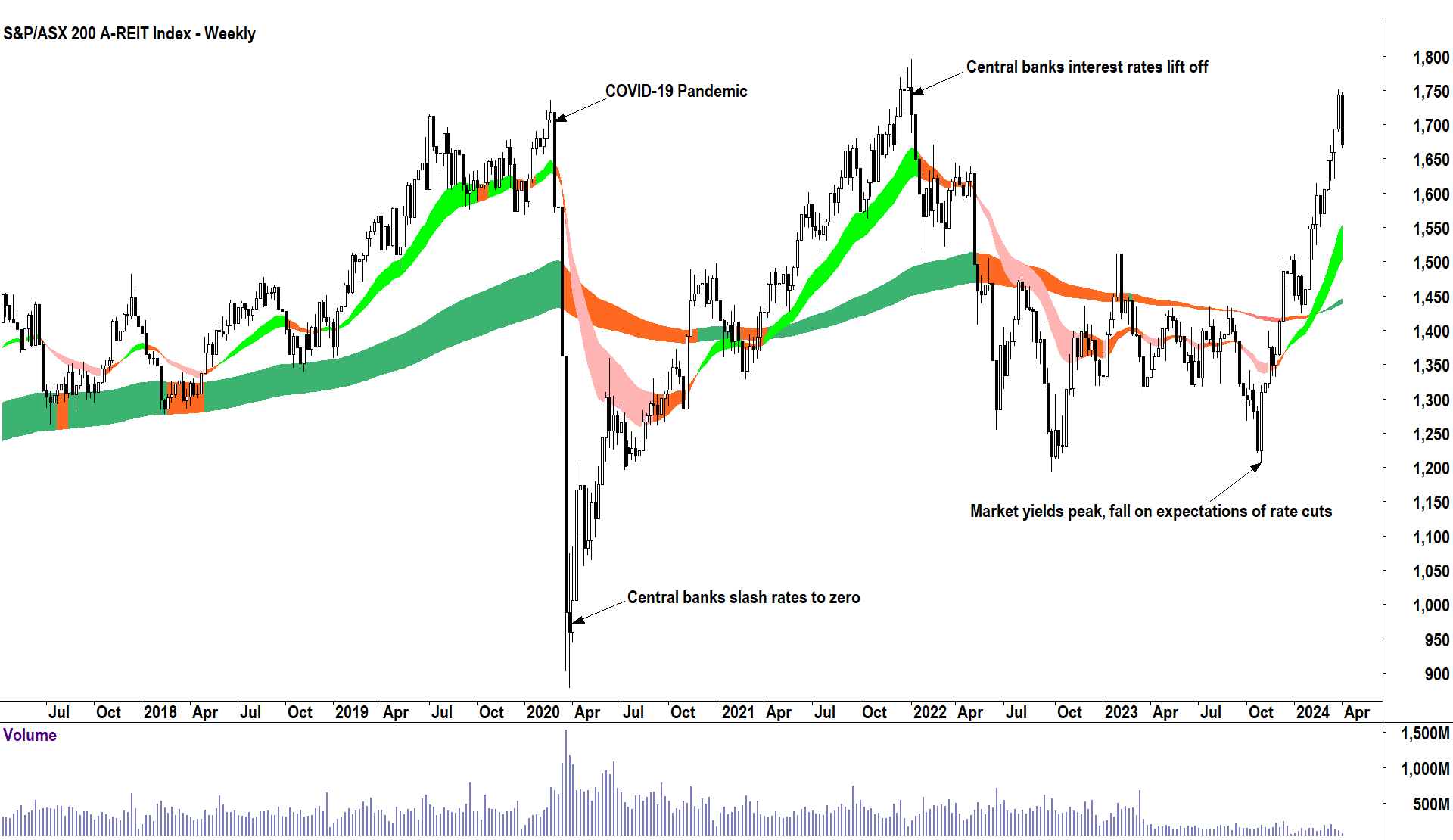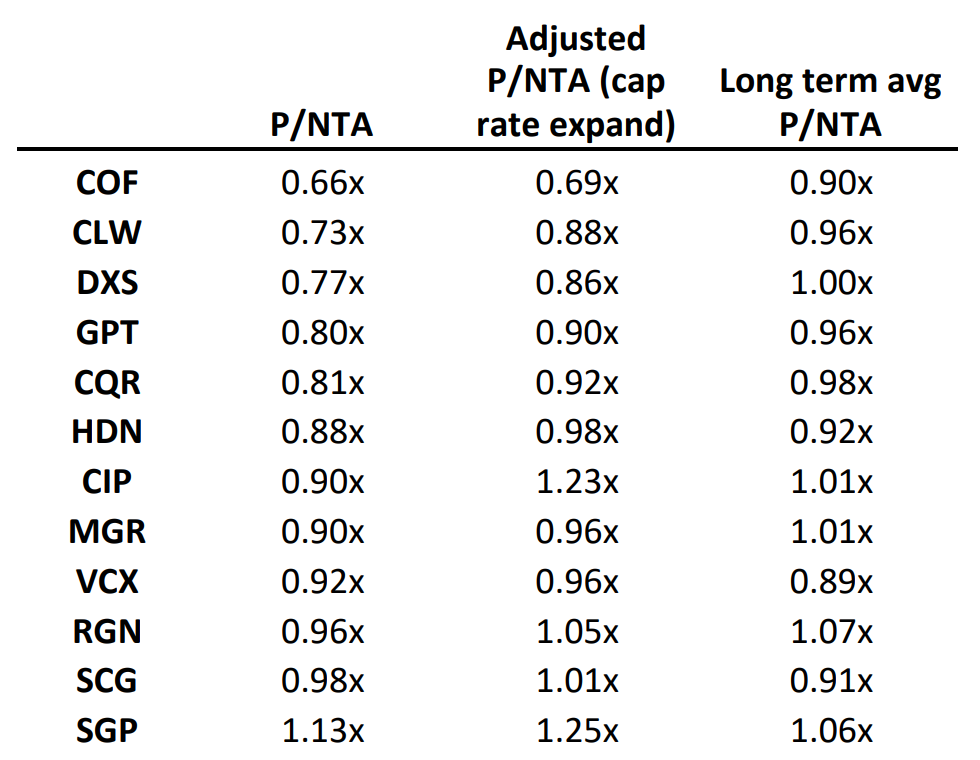The cheapest stocks in the ASX Real Estate sector based on Price to NTA
We all love a bargain, but how do you know you’re getting one? For stocks on the ASX, is it a high dividend yield? Is it a low price to earnings (P/E) ratio? Both metrics can be distorted by the “P” in the equation falling in advance of a widely anticipated decline in a company’s dividend or earnings per share respectively.
For this reason, many fundamentally focussed investors prefer to invest based upon the concept of net tangible assets, or NTA. This is the value of a company’s physical assets minus the value of its intangible assets and liabilities. The concept is often likened to the intrinsic value of a business.
When it comes to valuing real estate companies, particularly the real estate investment trusts (REITS) on the ASX, NTA is often the preferred valuation method because there are usually few intangibles associated with these assets.
Aussie REIT investors can usually quote you back each REITs price to NTA ratio, which is simply the REIT’s price divided by its NTA. A value greater than one indicates the REIT is trading a premium to its NTA, whereas a value less than one indicates it is trading a discount. Given investors love a good discount – many investors consider REITs trading at an NTA discount to be cheap.
In a new research report titled “Cap rate expansions almost done”, major broker Morgan Stanley considers just how much has changed over a tumultuous 24 months for Aussie REITs, and current price to NTA ratios in the sector.
The rollercoaster ride of investing in ASX REITs
REITs are actually pretty simple. They love lower rates, and they hate higher rates. Check out the chart below of the performance of the S&P/ASX 200 A-REIT Index (ASX: XPJ) since the COVID-19 pandemic broke out back in early 2020.
.png)
After the initial wipeout on lockdowns and the birth of the work from home phenomenon, interest rates were cut to zero around the globe, helping power a 118% gain in the XPJ between March 2020 and January 2022. In comparison, the benchmark S&P/ASX 200 (ASX: XJO) gained 76%.
The peak in January 2022 was no coincidence. Two months later, the US Federal Reserve commenced operation lift off, pumping official interest rates from zero to the current five and a half percent in a record-breaking short period of time. The XPJ dutifully fell over 30% (compared to XJO’s 11% fall).
In October 2023, hope of interest rate cuts saw market rates peak, and they’ve since fallen around 1%. Surprise, surprise, the XPJ has been the best performing ASX sector since then with a 46% gain compared to the XJO’s 18.7%.
History suggests Aussie REITs are a high beta play delivering both outsized gains and outsized losses depending on the path of interest rates. It seems, when they’re on a run, there’s rarely a better place in the ASX to be invested.
Conditions for ASX REITs have stabilised
Given the above, what’s the outlook for Aussie REITs now? As noted, market yields appear to be on the way down again, and in theory, this should be supportive for ASX REIT performance.
Morgan Stanley suggests the worst is likely behind the sector. Their main point of contention is that the spread between industry asset capitalisation rates (“cap rates”) and the Australian Government 10-year bond yield have moved from “their most narrow since the GFC” to within “striking distance” of the long term average. This means the risks of further industry asset devaluations is “somewhat limited”.
Let me translate!
The cap rate is a commonly used measure of the net yield of a property asset. It is calculated by dividing a property's net operating income by its asset value. Typically, when valuations come down (i.e., a bad thing for REITs), cap rates go up. A little perversely, they can also go up if rental and expense conditions are improving (i.e., a good thing for REITs).
A common measure of property sector value is the spread between cap rates and benchmark bond yields. In Australia, this means the yield of the 10-year government bond. Around the time of central bank lift off, and the peak in ASX REIT prices in 2022, the spread between the Australian real estate sector’s capitalisation rate and the yield on the Australian 10-year Government bond was at its lowest since the GFC. This implied near-perfect pricing of ASX REIT assets.
Industry devaluations increase cap rates (by reducing the magnitude of the denominator in the cap rate equation). Improving operating profitability through higher rents and lower interest rate expenses as market interest rates have eased, have also increased cap rates (by increasing the magnitude of the numerator in the cap rate equation). The combination of the above has helped push cap rates back up, and they’re now converging long term averages.
Morgan Stanley concludes, therefore, that “softening of asset values will be more contained from here, than 12 months ago”. The upshot is, even after adjusting for further asset devaluations (i.e., continued cap rate expansion), some ASX REITs are now starting to look “cheap”.
ASX REITs price to NTAs
The table below shows Morgan Stanley’s estimates for current and long term price to NTA ratios for the stocks covered in their latest research note. They’ve also provided an “Adjusted P/NTA” on the basis that they expect some further, but modest, cap rate expansion from here.

How to read Morgan Stanley’s price to NTA table:
- Lower Adjusted P/NTA is preferred (i.e., cheaper)
- Smaller difference between P/NTA and Adjusted P/NTA is preferred (i.e., minimal cap rate expansion/devaluations expected)
- Smaller difference between Adjusted P/NTA and Long term avg P/NTA is preferred (i.e., cheaper versus long term average)
Morgan Stanley’s ASX REITs conclusions
Clearly, for the ASX REITs covered, Morgan Stanley believes there are some substantially discounted price to NTA ratios (i.e., less than 1), as well as several considerably discounted ratios versus long term averages.
The cheapest ASX REITs are in the office sector according to Morgan Stanley. This is where cap rates are already close to their 20-year average, indicating minimal expected cap rate expansion/devaluations. They cite Dexus (ASX: DXS) and Centuria Office REIT (ASX: COF) as the most undervalued picks on the basis of the biggest discount in their Adjusted P/NTA to Long term average P/NTA.
In industrial REITs, Charter Hall Long Wale REIT (ASX: CLW) is the standout.
Morgan Stanley says there is far less value in retail REITs. They note that many of these are “trading close (or even at a premium) to their NTAs when we factor in further cap rate expansions”. Here they call out Scentre Group (ASX: SCG) and Vicinity Centres (ASX: VCX) as having “relatively robust” price to NTA’s, and Stockland (ASX: SGP) which they call “expensive”. One positive for retail REITs, though, says Morgan Stanley, is that they “have minimal concerns with [regarding] asset valuations” for the sector.
This article first appeared on Market Index on Thursday 4 April 2024.
5 topics
12 stocks mentioned

